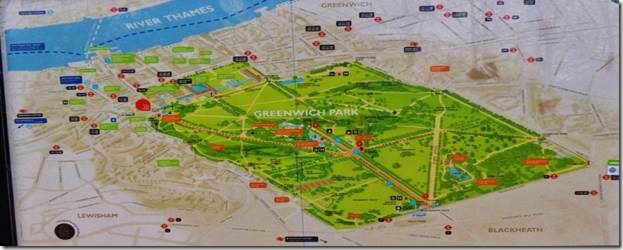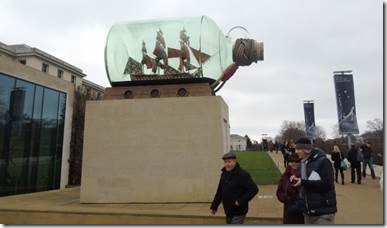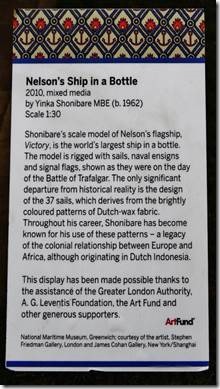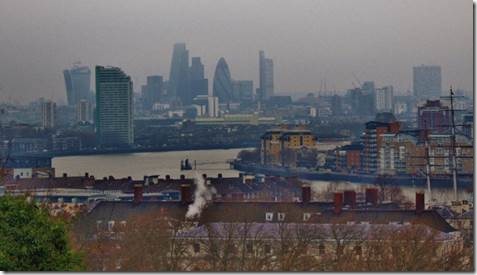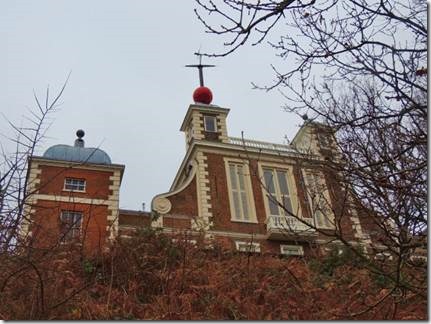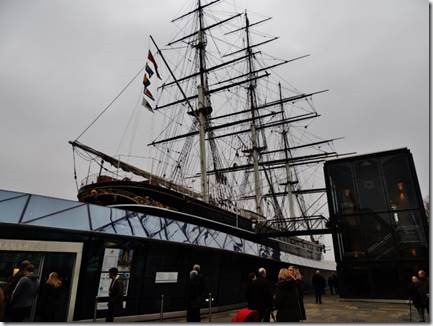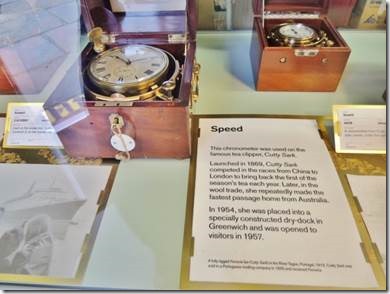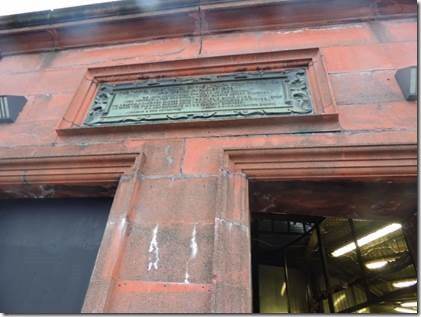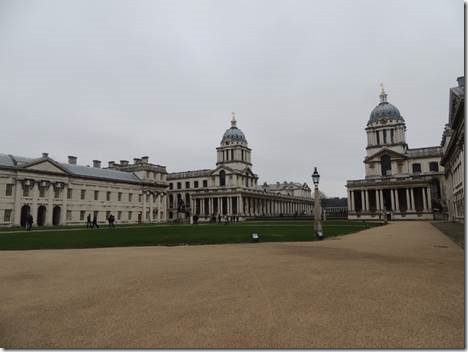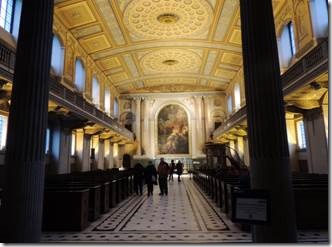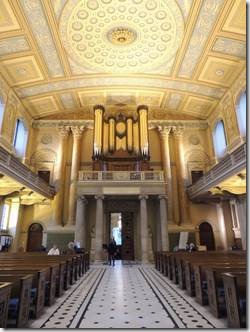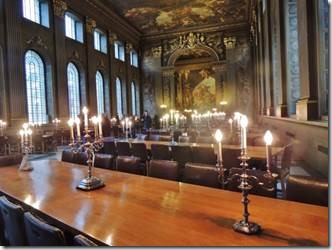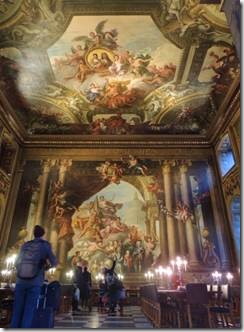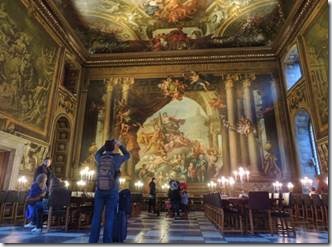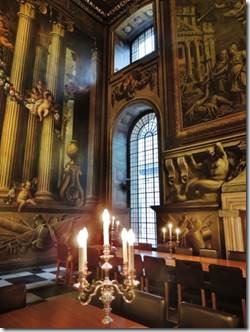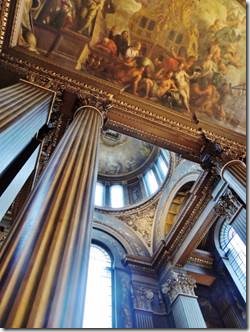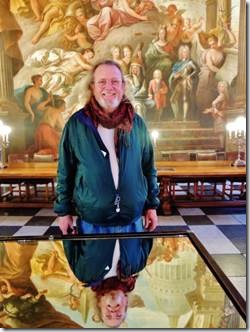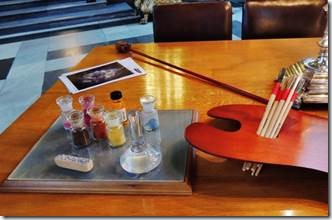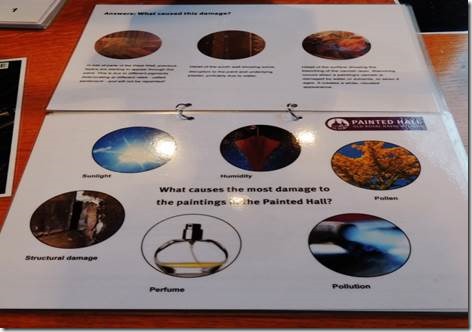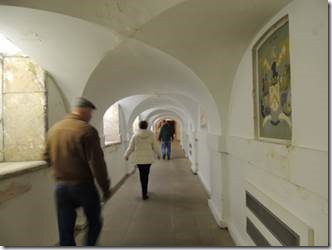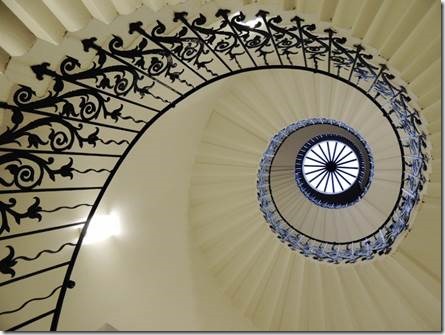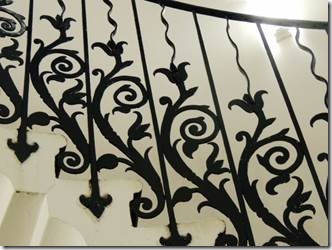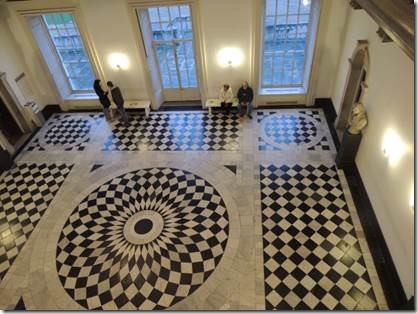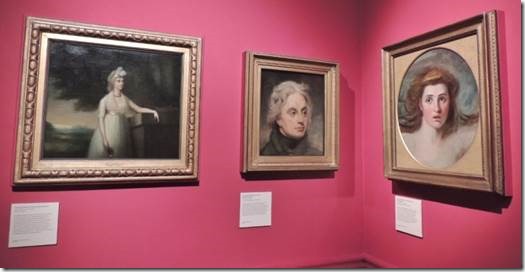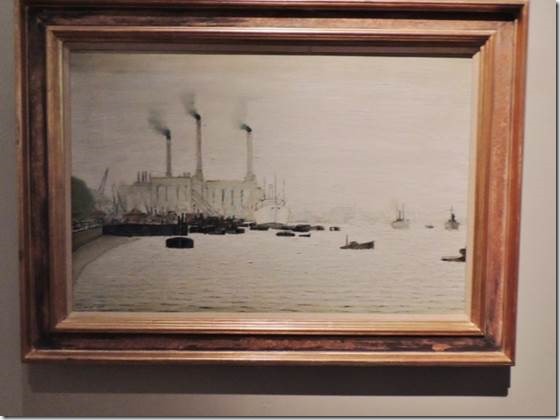Cheers,
I’m trying very hard not to have a cold. I have an annoying cough and a runny nose. Yuck. But I have plans for tomorrow and Saturday and lots going on and lots I want to do. So today, I’m having a rest day just doing two loads of laundry and catching up on some email. And finishing part 2 of our visit to Greenwich. Makes me want to return to see what we missed or what I missed when it was right in front of me. Randal is doing some boat cleaning which makes me feel a tad guilty, but I really have too little energy to do much so I’m not. I’m going to finish this, read, nap, watch an episode or two of New Trick, nap, read…..
Ru
|
Overall map of Greenwich Park: the Cutty Sark is situated on the Thames Modern History of the area…. 1675 Royal Observatory founded in Greenwich Park 1694 Queen Mary founds the Royal Hospital for Seamen 1705 The first 42 pensioners arrive at the Royal Hospital while building continues 1708 James Thornhill begins to decorate the Painted Hall 1751 Royal Hospital for Seamen buildings completed 1779 Chapel gutted by fire and rebuilt by James ‘Athenian’ Stuart’ 1806 Nelson’s body lies in state in the Painted Hall following his death at Trafalgar in 1805 1836 The world’s first suburban railway opens. It runs from London Bridge to Greenwich 1869 The Royal Hospital closes 1873 Royal Naval College – the Navy’s university – opens 1884 Longitude 0° at Greenwich becomes Prime Meridian 1902 The Greenwich Foot Tunnel is opened 1937 The National Maritime Museum is opened by King George VI 1954 Cutty Sark is moved into a dry dock at Greenwich 1997 Greenwich becomes a World Heritage Site 1998 Royal Naval College closes. Greenwich Foundation founded to look after the Old Royal Naval College (ORNC) |
|
Looking back towards London from the Royal Observatory Hill; not visible here but we could actually make out the dome and spire of St Paul’s Cathedral. Supposedly Greenwich is only 4 miles from Tower Bridge so we could actually walk one day. |
|
The Greenwich Time Ball Flamsteed House The bright red Time Ball on top of Flamsteed House is one of the world’s earliest public time signals, distributing time to ships on the Thames and many Londoners. It was first used in 1833 and still operates today. What does the Time Ball do? Each day, at 12.55, the time ball rises half way up its mast. At 12.58 it rises all the way to the top. At 13.00 exactly, the ball falls, and so provides a signal to anyone who happens to be looking. Of course, if you were looking the wrong way, you had to wait until the next day before it happened again. The Time Ball drops at 13.00 GMT during the winter months and 13.00 BST during the summer. Please note: the time ball will not be run if the weather is too windy. What did people do before there was a time ball? Only the richest people could afford to buy clocks and watches of their own. Most people relied on public sundials to tell the time. This led to different local times across the country, with clocks on the eastern side of the country about 30 minutes ahead of those in the west. The difficulties created by everyone using their own local time eventually led to the creation of Standard Time based on the Prime Meridian at Greenwich. http://www.rmg.co.uk/explore/astronomy-and-time/time-facts/the-greenwich-time-ball |
|
Cutty Sark The Cutty Sark is the most famous tea clipper built, and is the only one to survive, apart from the City of Adelaide aka RNVR Carrick which is now in Australia and being restored before being opened to the public. She is now in dry dock at Greenwich. She was launched at Dumbarton on the River Clyde, Scotland, in 1869. The name comes from Robert Burns’ poem, Tam O’Shanter; Tam meets a group of witches, most of whom are ugly, but for Nannie, who is young and beautiful and is described as wearing only a "cutty sark", i.e., a short chemise or shirt. The ship’s figurehead is a representation of this witch. The Cutty Sark’s sleek lines and enormous area of sail made her the fastest ship in the race via the Cape of Good Hope for the then particularly money-spinning tea trade with China. Unluckily for her owners, the Suez Canal was opened in the same year as her launch, which is not navigable by sailing ships. Her last cargo of tea was carried in 1877. Later, from 1885 to 1895, she was used in the wool trade with Australia, bringing the new season’s clip from Sydney to London, setting new speed records year after year. By 1895, she was again losing money for her owner and was sold to the Portuguese as the Ferreira, although interestingly enough her crews called her Pequina Camisola (‘little shirt’). She was worked by her new owners between Oporto, Rio, and Lisbon for over thirty years until 1920, when she was sold again, this time becoming the Maria do Amparo. In 1922 she underwent a refit in the Surrey Docks, London, and was driven to shelter from a storm in Falmouth harbour on her way home. A Captain Wilfred Dowman saw her there, and bought her from the Portuguese owners, returning her to British ownership again. On Capt. Dowman’s death in 1938, his widow presented her to the Thames Nautical Training College at Greenhithe on the Thames, where she was used as a training vessel. After the Second World war she again became surplus and eventually she was towed to Greenwich and placed in a specially constructed dry dock in 1954. After a lot of restoration work she was opened to the public in 1957. Since then more than thirteen million people have visited her. The ship was badly damaged by fire that broke out around 4.45 am on 21 May 2007. Thankfully, she was undergoing restoration work at the time of the fire, and about fifty per cent of the ship had been removed, including the iconic figurehead, the masts and rigging, the coach house, and a significant amount of planking, so the damage could have been a lot worse. After nearly five years, on 25 April 2012, Her Majesty The Queen, accompanied by His Royal Highness The Duke of Edinburgh, officially re-opened Cutty Sark. http://www.greenwich-guide.org.uk/cutty.htm Cutty Sark’s chronometer |
|
Foot Tunnel under the Thames…..something to do one day. The Greenwich Foot Tunnel runs under the River Thames between Cutty Sark Gardens and Island Gardens, on the Isle of Dogs. It is 1,217 feet in length and approximately 50 feet deep. Its original purpose was to allow south London residents to work in the docks on the Isle of Dogs. It was designed by Sir Alexander Binnie and was opened on 4 August 1902 at a cost of £127,000. The tunnel is lined with 200,000 glazed white tiles. The circular entrance buildings are similar both sides of the river and contain a lift and a long spiral flight of stairs. It is open 24 hours a day, although the lifts do not always run the full time. The Woolwich Foot Tunnel, situated about three miles downstream and opened ten years later, is very similar |
|
Old Royal Naval College Chapel and Painted Hall Royal Hospital for Seamen Built for charitable public purposes rather than to glorify personal status, the Royal Hospital for Seamen was established by Royal Charter in 1694 for the relief and support of seamen and their dependants. Sir Christopher Wren planned the site and the first foundation stone was laid on 30th June 1696. During the first half of the eighteenth century various illustrious architects, such as Hawksmoor, Vanbrugh and James ‘Athenian’ Stuart completed the design. In 1706 the first 42 Pensioners arrived. Numbers grew steadily as the buildings became usable, rising to 2,710 in 1814. Although they slept on beds instead of hammocks, their diet (based on bread, beer and boiled meat) would have reminded them of their days at sea. They took meals in the undercrofts below the Painted Hall and Chapel and were allowed to smoke their clay pipes or ‘chalks’ in the Chalk Walk, now the Skittle Alley. As the nineteenth century wore on, with peace established, numbers of Pensioners declined and the Hospital finally closed in 1869. http://www.ornc..org/visit/history/royal-hospital |
|
“A glorious neoclassical Chapel” “The Chapel, constructed by Thomas Ripley to the designs of Sir Christopher Wren, was the last major part of the Royal Hospital for Seamen to be built. Following a disastrous fire in 1779, it was redecorated by James ‘Athenian’ Stuart in the Greek revival style, and today is a wonderful example of a complete neoclassical interior. The interior of the original chapel was much plainer than today, with a flat panelled ceiling, an apse (alcove) at the east end, and much smaller galleries. For many years there were no pews, and the injured sailors had to stand during their daily service. At 6am on 2 January 1779, a tremendous fire gutted the building, leaving only a shell. James Stuart, as Surveyor at the Royal Hospital for Seamen, was appointed to re-design the Chapel in 1781. The Chapel reflects his influences of ancient Greek architecture and design. Stuart left much of the work to his Clerks of Works, Robert Mylne and William Newton who deserve much of the credit for the way the Chapel looks. Features that merit a special mention include the Samuel Green organ (the only one of its kind to remain in situ). Key facts •The Chapel is dedicated to St Peter and St Paul, both of whom have connections with water and the sea. •The vast altarpiece painting is the only one of Benjamin West’s altarpieces to remain in the same place for which it was commissioned. •The 1789 Chapel organ is the largest in situ work of Samuel Green, the leading organ builder of his day. The Chapel today Following extensive restoration in the 1950s, the Chapel today looks much as it did in 1798 when it re-opened after the fire. Today it is open to visitors free of charge. Join one of our knowledgeable Yeomen guides on a daily tour or download one of our free interpretation guides to learn more about the Chapel. This printed guide is also available in English and other languages from the welcome desk” http://www.ornc.org/visit/attractions/chapel |
|
Trolleys with mirrors were available to make viewing the painted ceiling easier. Though this too reminds me of Harry Potter it wasn’t listed as having been filmed here. But you’ll recognize lots that were if you click on the link below. “The Old Royal Naval College (ORNC) has been host to a star-studded cast, which includes amongst others Colin Firth, Helen Mirren, Hugh Grant, Sharon Stone, Keira Knightley, Owen Wilson, Jackie Chan, Nicole Kidman, James McAvoy, Naomi Watts, Jude Law, Rowan Atkinson and Jonny Depp.” |
|
Painted Hall The finest dining hall in Europe The Painted Hall is often described as the ‘finest dining hall in Europe’. Designed by Sir Christopher Wren and Nicholas Hawksmoor, it was originally intended as an eating space for the naval veterans who lived here at the Royal Hospital for Seamen. Its exuberant wall and ceiling decorations are by Sir James Thornhill and pay tribute to British maritime power. The Painted Hall sits within the King William Court. Wren submitted designs in 1698 and the roof and dome were in place five years later. When in 1708 James Thornhill began decorating the interior, he was instructed to include many references to the importance of the navy in Britain’s fortunes. His ‘great and laborious undertaking’ was completed after 19 years, by which time the Painted Hall was felt to be far too grand for its original purpose. Respectable visitors were allowed admittance, after paying a small fee, and the residents of the Royal Hospital – Greenwich Pensioners – acted as tour guides. Thornhill was paid only £3 per square yard (about one square metre) for the ceiling, and just £1 per square yard for the walls. However, he did receive a knighthood in 1720 and his legacy is the finest painted architectural interior by an English artist. Key facts • In 1806, 3 months after the Battle of Trafalgar the previous October, the body of Horatio Nelson was brought to lie in state in the Painted Hall. • Between 1824 and 1936, it was known as the National Gallery of Naval Art, with over 300 naval-themed paintings on display. • In 1939, it was used for dining (including breakfast) by the officers of the Royal Naval College. The Painted Hall today Today the Painted Hall is open to visitors free of charge. It is also still used for the purpose for which it was originally built; as a venue for dinners and formal occasions. Visit our events calendar or venue hire pages for more details. If you would like to learn more about the Painted Hall, join one of our knowledgeable Yeomen guides on a daily tour or download one of our free interpretation guides. This printed guide is also available in English and other languages from the welcome desk in the Painted Hall for 50p purchase. |
|
The undercroft “chalk walk” where the men could smoke some of their clay “chalk” pipes. |
|
By the time we got to the Queen’s House we were all pretty pooped. But “the tulip staircase” in the Queen’s House was on my list so we stopped in to see it. “The Queen’s House, Greenwich, was commissioned by Anne of Denmark, wife of James I (reigned 1603–25). James was often at the Tudor Palace of Greenwich, where the Old Royal Naval College now stands – it was as important a residence of the early Stuart dynasty as it had been for the Tudors. Traditionally he is said to have given the manor of Greenwich to Anne in apology for having sworn at her in public, after she accidentally shot one of his favourite dogs while hunting in 1614.” http://www.rmg.co.uk/about/history/queens-house Correction: In my first Greenwich post I wrote that our White House is based on the Queen’s House per several websites I found. But I have double checked the White House site and double checked the actual Maritime Museum site and find no absolute link other than the general architectural style of Palladianism. RJ
The White House: “The building Hoban designed was modeled on the first and second floors of Leinster House, a ducal palace in Dublin, Ireland, which is now the seat of the Irish Parliament.” |
|
The Tulip Stairs “The elegant Tulip Stairs in the Queen’s House are the first geometric self-supporting spiral stair in Britain. Although called the ‘tulip’ stairs, it is thought that the stylized flowers in the wrought-iron balustrade are actually fleurs-de-lis, as this was the emblem of the Bourbon family of which Queen Henrietta Maria (wife of Charles I) was a member. The Queen’s House ghost The Tulip Stairs are also the location of the Rev R. W. Hardy’s famous ‘ghost’ photograph taken on 19 June 1966, which when developed revealed what appear to be two or three shrouded figures on the staircase. Find out more about the Queen’s House ghost” http://www.rmg.co.uk/queens-house/great-hall?show=nav.3536 http://www.rmg.co.uk/about/history/queens-house/the-queen-s-house-ghost?show=conWebDoc.1912#hardy ghost link |
|
Looking up |
|
The Great Hall “The first room that visitors would have come into was the visually-stunning Great Hall, a huge perfect cube (40 x 40 ft) that rises through the centre of the House’s north side. The design of the whole House and the Great Hall in particular reflects Renaissance ideals of mathematical, classical proportion and harmony. Probably the most striking feature of the Great Hall is the geometrically-patterned black-and-white marble floor, laid in 1635. The wooden balcony running around the Great Hall at first floor level was sometimes used by musicians.” http://www.rmg.co.uk/queens-house/great-hall |
|
Interesting grouping of portraits: Mrs Lord Nelson, Lord Nelson, and Mistress Lord Nelson |
|
The Queen’s House had a varied collection of art including the portraits of the “Nelson” family but also some more contemporary art. My favorite is below. |
|
I was fascinated by this power station as we motored past up the Thames on our way to SKD in September. The River at Greenwich: Laurence Stephen Lowry, 1877-1976 “This view of the old Deptford Power Station seen beyond Greenwich Pier is one of Lowry’s rare London paintings. Physically and metaphorically turning his back on the baroque buildinfs of the Royal Naval College, Lowry shows his preference for painting industrial scenes.” From the caption next to the painting. http://www.bbc.co.uk/arts/yourpaintings/artists/laurence-stephen-lowry |

